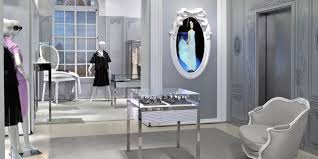Introduction: Decoding the Fashion Spectrum

In the realm of fashion, two terms hold distinct places: Haute Couture and Ready-to-Wear. Understanding the differences between these design approaches is crucial for anyone looking to delve into the world of high fashion. This article will unravel the intricacies of both, shedding light on their histories, characteristics, and the influence they wield in today’s fashion landscape.
What is Haute Couture?
Origins of Haute Couture
Haute Couture, a term derived from French, translates to “high sewing” or “high dressmaking.” Its origins can be traced back to the late 19th century in Paris, where skilled artisans created bespoke, one-of-a-kind garments for the elite clientele.
Characteristics of Haute Couture
- Customization and Craftsmanship: Each Haute Couture piece is meticulously handcrafted to fit the client’s unique measurements and preferences.
- Exquisite Materials: Only the finest and most luxurious fabrics are used, often sourced from around the world.
- Unparalleled Attention to Detail: Every stitch, embellishment, and finish is executed with precision and artistry.
The Haute Couture Process
Design and Consultation
The process commences with an in-depth consultation between the client and the designer. Ideas are exchanged, sketches are drawn, and the vision for the garment is crystallized.
Toile Fitting
A prototype garment, known as a toile, is created from inexpensive fabric. This allows the client to see the design in three dimensions and make any necessary adjustments.
Creation and Fittings
Once the final design is approved, the garment is painstakingly crafted by skilled artisans. Multiple fittings ensure a flawless fit and finish.
The Final Showcase
The finished Haute Couture piece is presented at exclusive fashion shows, showcasing the pinnacle of sartorial artistry.
What is Ready-to-Wear?
Emergence of Ready-to-Wear
Ready-to-Wear, also known as “prêt-à-porter” in French, emerged as a response to the growing demand for more accessible and affordable fashion during the mid-20th century.
Characteristics of Ready-to-Wear
- Mass Production: Ready-to-Wear garments are produced in larger quantities, making them more widely available.
- Standardized Sizing: Unlike Haute Couture, these pieces follow standard sizing charts, catering to a broader consumer base.
- Affordability: Ready-to-Wear pieces are relatively more affordable, allowing a wider audience to partake in high fashion trends.
The Ready-to-Wear Process
Design and Production
Designers of Ready-to-Wear fashion create collections based on seasonal trends. These designs are then translated into patterns for mass production.
Distribution and Retail
Ready-to-Wear collections are distributed to retailers around the world, both in physical stores and online platforms, ensuring accessibility to a global audience.
Consumer Experience
Consumers have the convenience of selecting from a range of sizes and styles, making the purchasing process more straightforward compared to Haute Couture.
Conclusion: Bridging the Fashion Divide
In the grand tapestry of fashion, Haute Couture and Ready-to-Wear represent two distinct threads, each with its own allure and significance. While Haute Couture stands as the epitome of bespoke luxury, Ready-to-Wear democratizes fashion, making it accessible to a broader audience.


